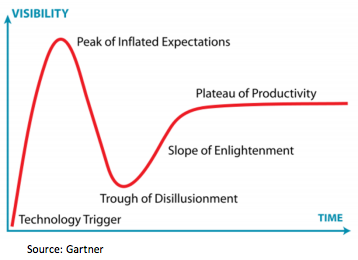The $2.5 million payment and corrective action plan that the U.S. Department of Health and Human Services, Office for Civil Rights (OCR) required for CardioNet to settle potential charges of noncompliance with the Health Insurance and Portability Act (HIPAA) Privacy and Security Rules contains many important lessons for other healthcare providers, health plans, healthcare clearinghouses (Covered Entities) and their business associates.
A remote cardiac monitoring provider, CardioNet is paying the $2.5 million settlement payment and implementing a corrective action plan to settle potential OCR charges it violated HIPAA by impermissible disclosure of unsecured electronic protected health information (ePHI).
The first OCR HIPAA settlement involving a wireless health services provider, the CardioNet Resolution Agreement and Corrective Action Plan (Resolution Agreement) announced by OCR on April 24, 2017, adds to the rapidly growing list of announced OCR HIPAA enforcement actions that clearly show all covered entities and their business associates the substantial enforcement liability risks of failing to finalize and actually adopt, implement, administer and maintain the necessary HIPAA Privacy and Security policies and procedures required by HIPAA as well as some of the steps OCR expects to fulfill these requirements.
CardioNet OCR Investigation and Resolution Agreement
As has become increasingly common in recent years, the CardioNet settlement arose from concerns initially brought to OCR’s attention in connection with a HIPAA breach notification report. On Jan. 10, 2012, OCR received notification from the provider of remote mobile monitoring of and rapid response to patients at risk for cardiac arrhythmias that a workforce member’s laptop with the ePHI of 1,391 individuals was stolen from a parked vehicle outside of the employee’s home. CardioNet subsequently notified OCR of a second breach of ePHI 2,219 individuals.
The facts outlined in the resolution agreement highlight compliance weaknesses existing in the operations of many HIPAA covered entities and business associates. According to the resolution agreement, OCR’s investigation in response to these breach reports revealed a series of continuing compliance concerns, including:
- CardioNet failed to conduct an accurate and thorough risk analysis to assess the potential risks and vulnerabilities to the confidentiality, integrity and availability of ePHI and failed to plan for and implement security measures sufficient to reduce those risks and vulnerabilities;
- CardioNet’s policies and procedures implementing the standards of the HIPAA Security Rule were in draft form and had not been implemented;
- CardioNet was unable to produce any final policies or procedures regarding the implementation of safeguards for ePHI, including those for mobile devices;
- CardioNet failed to implement policies and procedures that govern the receipt and removal of hardware and electronic media that contain electronic protected health information into and out of its facilities, the encryption of such media, and the movement of these items within its facilities until March 2015; and
- CardioNet failed to safeguard against the impermissible disclosure of protected health information by its employees, thereby permitting access to that information by an unauthorized individual, and failed to take sufficient steps to immediately correct the disclosure.
See also: Healthcare Buyers Need Clearer Choices
To resolve these OCR charges, CardioNet agrees to pay $2.5 million to OCR and implement a corrective action plan. Among other things, the corrective action plan requires CardioNet to complete the following actions to the satisfaction of OCR:
- Prepare a current, comprehensive and thorough risk analysis of security risks and vulnerabilities that incorporates its current facility or facilities and the electronic equipment, data systems and applications controlled, currently administered or owned by CardioNet, that contain, store, transmit, or receive electronic protected health information (“ePHI”) and update that risk analysis annually or more frequently, if appropriate in response to environmental or operational changes affecting the security of ePHI.
- Assess whether its existing security measures are sufficient to protect its ePHI and revise its risk management plan, policies and procedures and training materials and implement additional security measures, as needed.
- Develop and implement an organization-wide risk management plan to address and mitigate any security risks and vulnerabilities found in the risk analysis as required by the risk management plan.
- Review and, to the extent necessary, revise, its current security rule policies and procedures based on the findings of the risk analysis and the implementation of the risk management plan to comply with the HIPAA Security Rule.
- Provide certification to OCR that all laptops, flashdrives, SD cards and other portable media devices are encrypted, together with a description of the encryption methods used.
- Review and revise its HIPAA security training to include a focus on security, encryption and handling of mobile devices and out-of-office transmissions and other policies and practices required to address the issues identified in the risk assessment and otherwise comply with the risk management plan and HIPAA train its workforce on these policies and practices.
- Investigate all potential violations of its HIPAA policies and procedures and notify OCR in writing within 30 days of any violation.
- Submit annual reports to OCR, which must be signed by an owner or officer of CardioNet attesting that he or she has reviewed the annual report, has made a reasonable inquiry regarding its content and believes that the information is accurate and truthful.
- Maintain for inspection and copying, and provide to OCR, upon request, all documents and records relating to compliance with the corrective action plan for six years.
Implications of CardioNet and Other HIPAA Enforcement For Covered Entities and Business Associates
The CardioNet resolution agreement contains numerous lessons for other covered entities and their business associates, including:
- Like many previous resolution agreements announced by OCR, the resolution agreement reiterates the responsibility of covered entities and business associates to properly secure their ePHI and that as part of this process OCR expects all laptop computers and other mobile devices containing or with access to ePHI will be properly encrypted and secured.
- It also reminds covered entities and their business associates to be prepared for, and expect an audit from, OCR when OCR receives a report that the organization experienced a large breach of unsecured ePHI.
- The resolution agreement’s highlighting of the draft status of CardioNet’s privacy and security policies also reflects that OCR expects covered entities to actually finalize policies, procedures and training for maintaining compliance with HIPAA.
- The discussion and requirements in the corrective action plan relating to requirements to conduct comprehensive risk assessments at least annually and in response to other events, and to update policies and procedures in response to findings of these risk assessments also drives home the importance of conducting timely, documented risk analyses of the security of ePHI, taking prompt action to address known risks and periodically updating the risk assessment and the associated privacy and security policies and procedures in response to the findings of the risk assessment and other changing events.
- The requirement in the resolution agreement of leadership attestation and certification on the required annual report reflects OCR’s expectation that leadership within covered entities and business associates will make HIPAA compliance a priority and will take appropriate action to oversee compliance.
- Finally, the $2.5 million settlement payment required by the resolution agreement and its implementation against CardiNet makes clear that OCR remains serious about HIPAA enforcement.
While the $2.5 million settlement payment sends a strong message about the risks of violating HIPAA by itself, this lesson takes on even greater significance when considered in light of OCR’s January 2017 announcement of its imposition of another HIPAA civil monetary penalty against Children’s Medical Center of Dallas and the growing list of expensive settlement payments that OCR has exacted from other covered entities wishing to avoid CMPs for their alleged HIPAA violations.
In January 2017, for instance, OCR
announced Children’s paid a $3.2 million CMP assessed by OCR for failing to adequately secure electronic protected health information (ePHI) and correct other HIPAA compliance deficiencies that resulted from its failure to take appropriate, well-documented actions to timely to secure ePHI on systems and mobile devices and other actions needed to comply with other HIPAA privacy or security requirements.
Of course, covered entities and business associates need to keep in mind that that actions and inactions that create HIPAA liability risks also carry many other potential legal and business risks. For instance, since PHI records and data involved in such breaches usually incorporates Social Security Numbers, credit card or other debt or payment records or other personal consumer information, and other legally sensitive data, covered entities and business associates generally also may face investigation, notification and other responsibilities and liabilities under confidentiality, privacy or data security rules of the Fair and Accurate Credit Transaction Act (FACTA), the Internal Revenue Code, the Social Security Act, state identity theft, data security, medical confidentiality, privacy and ethics, insurance, consumer privacy, common law or other state privacy claims and a host of other federal or state laws. Depending on the nature of the covered entity or its business associates, the breach or other privacy event also may trigger fiduciary liability exposures for health plan fiduciaries in the case of a health plan, professional ethics or licensing investigations or actions against health care providers, insurance companies, administrative service providers or brokers, shareholder or other investor actions, employment or vendor termination or disputes and a host of other indirect legal consequences.
See also: Healthcare Disruption: Providers Are Making Newspaper Industry Mistakes
Beyond, and regardless of the technical legal defensibility of its actions under these and other laws, however, the most material and often most intractable consequences of a HIPAA or other data or other privacy breach report or public accusation, investigation, admission also typically are the most inevitable:
- The intangible, but critical loss of trust and reputation that covered entities and business associates inevitably incur among their patients, participants, business partners, investors and the community; and
- The substantial financial expenses and administrative and operational disruptions of investigating, defending the actions of the organization and implementation of post-event corrective actions following a data or other privacy breach, audit, investigation or charge.
In light of these risks, covered entities business associates and their management should use the experiences of CardioNet and other covered entities or business associates caught violating HIPAA or other privacy and security standards to reduce their HIPAA and other privacy and data security exposures. Management of covered entities and their business associates should take steps to ensure that their organizations policies, practices and procedures currently are up-to-date, appropriately administered and monitored, and properly documented. Management should ensure that their organizations carefully evaluate and strengthen as necessary their current HIPAA risk assessments, policies, practices, record keeping and retention and training in light of these and other reports as they are announced in a well-documented manner. The focus of these activities should be both to maintain compliance and position their organizations efficiently and effectively to respond to and defend their actions against a data breach, investigation, audit or accusation of a HIPAA or other privacy or security rule violation with a minimum of liability, cost and reputational and operational damages.
As the conduct of these activities generally will involve the collection and analysis of legally sensitive matters, most covered entities and business associates will want to involve legal counsel experienced with these matters and utilize appropriate procedures to be able to use and assert attorney-client privilege and other evidentiary privileges to mitigate risks associated with these processes. To help plan for and mitigate foreseeable expenses of investigating, responding to or mitigating a known, suspected or asserted breach or other privacy event, most covered entities and business associates also will want to consider the advisability of tightening privacy and data security standards, notification, cooperation and indemnification protections in contracts between covered entities and business associates, acquiring or expanding data breach or other liability coverage, or other options for mitigating the financial costs of responding to a breach notification, investigation or enforcement action.
 A Way Forward to Doing
Duhigg describes two approaches for changing harmful organizational habits so that beneficial change can take place. The first involves the implementation of and commitment to a small number of “keystone habits” by company leadership. A keystone habit is one that has a ripple effect on other habits that, over time, can transform the company. Implementing the keystone habit leads to improvements in other areas, much like a habit of exercising has been shown to lead to other positive habits like better eating and increased productivity. To illustrate this, Duhigg described how Paul O’Neill’s singular focus on improving worker safety at Alcoa during his tenure as CEO rippled through the company’s other processes and ended up transforming it from a struggling, dysfunctional company into an economic powerhouse.
The second approach is to wait until a crisis occurs and use it to shock the organization into change. While effective, waiting for a crisis certainly seems like a less desirable option. But sometimes it takes a major failure to motivate organizations to change their old, established ways of doing things. In fact, Duhigg notes that good leaders seize crisis “opportunities” to remake organizational habits, and some even prolong the sense of emergency on purpose.
See also: A Gap That Could Lead to Irrelevance
The insurance companies that are not yet acting on the changes, or that don’t act soon, unfortunately may find that the gap between them and the leaders may become too large to be overcome. It’s best to weed out detrimental habits and make room for growth.
In our last blog in the series, we’ll look at some practical ways that insurers are closing the growing gap between knowing and doing. We’ll also look at the myth of stability that keeps insurers from taking much needed risks to build a secure future. In the meantime, be sure to read Majesco’s recently released report, Strategic Priorities 2017 — Knowing vs. Doing.
A Way Forward to Doing
Duhigg describes two approaches for changing harmful organizational habits so that beneficial change can take place. The first involves the implementation of and commitment to a small number of “keystone habits” by company leadership. A keystone habit is one that has a ripple effect on other habits that, over time, can transform the company. Implementing the keystone habit leads to improvements in other areas, much like a habit of exercising has been shown to lead to other positive habits like better eating and increased productivity. To illustrate this, Duhigg described how Paul O’Neill’s singular focus on improving worker safety at Alcoa during his tenure as CEO rippled through the company’s other processes and ended up transforming it from a struggling, dysfunctional company into an economic powerhouse.
The second approach is to wait until a crisis occurs and use it to shock the organization into change. While effective, waiting for a crisis certainly seems like a less desirable option. But sometimes it takes a major failure to motivate organizations to change their old, established ways of doing things. In fact, Duhigg notes that good leaders seize crisis “opportunities” to remake organizational habits, and some even prolong the sense of emergency on purpose.
See also: A Gap That Could Lead to Irrelevance
The insurance companies that are not yet acting on the changes, or that don’t act soon, unfortunately may find that the gap between them and the leaders may become too large to be overcome. It’s best to weed out detrimental habits and make room for growth.
In our last blog in the series, we’ll look at some practical ways that insurers are closing the growing gap between knowing and doing. We’ll also look at the myth of stability that keeps insurers from taking much needed risks to build a secure future. In the meantime, be sure to read Majesco’s recently released report, Strategic Priorities 2017 — Knowing vs. Doing.
 A Way Forward to Doing
Duhigg describes two approaches for changing harmful organizational habits so that beneficial change can take place. The first involves the implementation of and commitment to a small number of “keystone habits” by company leadership. A keystone habit is one that has a ripple effect on other habits that, over time, can transform the company. Implementing the keystone habit leads to improvements in other areas, much like a habit of exercising has been shown to lead to other positive habits like better eating and increased productivity. To illustrate this, Duhigg described how Paul O’Neill’s singular focus on improving worker safety at Alcoa during his tenure as CEO rippled through the company’s other processes and ended up transforming it from a struggling, dysfunctional company into an economic powerhouse.
The second approach is to wait until a crisis occurs and use it to shock the organization into change. While effective, waiting for a crisis certainly seems like a less desirable option. But sometimes it takes a major failure to motivate organizations to change their old, established ways of doing things. In fact, Duhigg notes that good leaders seize crisis “opportunities” to remake organizational habits, and some even prolong the sense of emergency on purpose.
See also: A Gap That Could Lead to Irrelevance
The insurance companies that are not yet acting on the changes, or that don’t act soon, unfortunately may find that the gap between them and the leaders may become too large to be overcome. It’s best to weed out detrimental habits and make room for growth.
In our last blog in the series, we’ll look at some practical ways that insurers are closing the growing gap between knowing and doing. We’ll also look at the myth of stability that keeps insurers from taking much needed risks to build a secure future. In the meantime, be sure to read Majesco’s recently released report, Strategic Priorities 2017 — Knowing vs. Doing.
A Way Forward to Doing
Duhigg describes two approaches for changing harmful organizational habits so that beneficial change can take place. The first involves the implementation of and commitment to a small number of “keystone habits” by company leadership. A keystone habit is one that has a ripple effect on other habits that, over time, can transform the company. Implementing the keystone habit leads to improvements in other areas, much like a habit of exercising has been shown to lead to other positive habits like better eating and increased productivity. To illustrate this, Duhigg described how Paul O’Neill’s singular focus on improving worker safety at Alcoa during his tenure as CEO rippled through the company’s other processes and ended up transforming it from a struggling, dysfunctional company into an economic powerhouse.
The second approach is to wait until a crisis occurs and use it to shock the organization into change. While effective, waiting for a crisis certainly seems like a less desirable option. But sometimes it takes a major failure to motivate organizations to change their old, established ways of doing things. In fact, Duhigg notes that good leaders seize crisis “opportunities” to remake organizational habits, and some even prolong the sense of emergency on purpose.
See also: A Gap That Could Lead to Irrelevance
The insurance companies that are not yet acting on the changes, or that don’t act soon, unfortunately may find that the gap between them and the leaders may become too large to be overcome. It’s best to weed out detrimental habits and make room for growth.
In our last blog in the series, we’ll look at some practical ways that insurers are closing the growing gap between knowing and doing. We’ll also look at the myth of stability that keeps insurers from taking much needed risks to build a secure future. In the meantime, be sure to read Majesco’s recently released report, Strategic Priorities 2017 — Knowing vs. Doing.


















